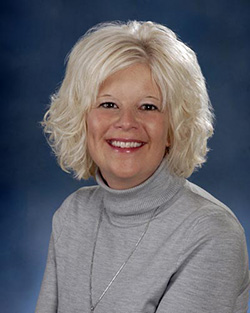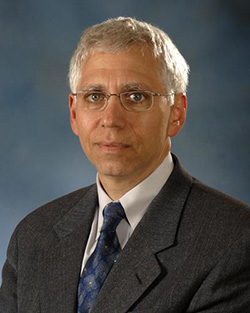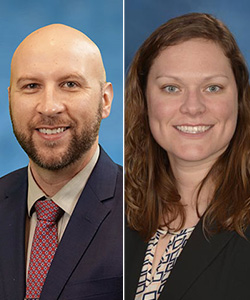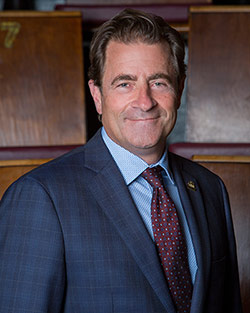August 10, 2022

Funds Awarded by the Patient-Centered Outcomes Research Institute to Identify Best Interventions to Prevent Recurrent Leg and Hip Fractures

“Our ultimate goal is to implement the most effective strategies for preventing recurrent fractures in adults over age 65 who suffer from osteoporosis,” said study co-principal investigator Denise Orwig, PhD, Professor of Epidemiology & Public Health at UMSOM. “We plan to introduce an integrated multi-modal intervention, with clinical decision support, to help skilled nursing providers give patients the tools they need to retain their function and mobility and improve their overall bone health.”
An estimated 10 million American adults over age 65 have osteoporosis, which causes two million disabling fractures every year. Additionally, the number of people with osteoporosis or low bone mass is expected to increase by 17 million by 2030. Patients who break a hip or leg often experience long-term disability that requires rehabilitation in a skilled nursing facility and sometimes permanent placement in a nursing home. Such injuries can be life threatening and lead to an earlier death. Older adults with lower limb fractures typically receive acute care and surgery in a hospital and then are discharged within 3–5 days to a skilled nursing facility (SNF) for rehabilitation, where care differs widely depending on the facility.
“There is evidence that individuals with these fractures do not get screened, diagnosed, or treated for osteoporosis,” Dr. Orwig said. “The general goal for SNF rehabilitation is to get patients back to pre-fracture level of function; however, there seems to be a lack of consensus regarding the standards of care for fracture patients in SNFs, and these facilities rarely comprehensively address bone health.”
Many studies confirm that a simple regimen of exercise, healthy diet, and bone-strengthening medications can improve overall recovery in these patients. Ultimate success, however, depends on patients following these approaches after they return home, and many fail to do so often because they lack the support they need to make the changes permanent.

The goal is to improve a patient’s adherence to a tailored exercise plan, healthy eating with foods rich in vitamin D, calcium, and protein to build bones and muscle, and use of bone-enhancing medications. The program has a clinical decision support component to help guide clinicians to the most effective strategies for an individual patient and engage patients and their caregivers in decision-making.
“This program will use electronic systems and educational modules to help to ensure that evidence-based interventions are routinely implemented and sustained in clinical practice as fracture patients leave the hospital and transition to the SNF and back into their community,” said study co-investigator Jay Magaziner, PhD, Professor and Chair of the Department of Epidemiology & Public Health, and Director of the Center for Research on Aging at UMSOM.

Patricia Dykes, PhD, RN, Program Director of the Center for Nursing Excellence at Brigham & Women’s Hospital in Boston, is the co-principal investigator of the project along with Dr. Orwig.
The researchers will collect patient-reported outcomes on physical function and quality of life from 1,320 patients across 24 SNFs run by ProMedica, half of which will implement the OPTIONS program, while the other 12 SNFs will implement enhanced usual care program.
This study will provide sound data about the effectiveness of OPTIONS. OPTIONS could then be incorporated into other SNFs and community-based programs. This step would ensure that tailored prevention recommendations are evidence-based and consistent with patients’ needs and preferences.

“This study was selected for PCORI funding for its potential to provide real-world data on the comparative effectiveness of combinations or sequencing of therapies to prevent a subsequent fracture among people living with osteoporosis,” said PCORI Executive Director Nakela L. Cook, MD, MPH. “We look forward to following the study’s progress.”
The funding award has been approved pending completion of a business and programmatic review by PCORI staff and issuance of a formal award contract.
PCORI is an independent, nonprofit organization authorized by Congress in 2010. Its mission is to fund research that will provide patients, their caregivers, and clinicians with the evidence-based information needed to make better-informed healthcare decisions. For more information about PCORI’s funding, visit www.pcori.org.
About the University of Maryland School of Medicine
Now in its third century, the University of Maryland School of Medicine was chartered in 1807 as the first public medical school in the United States. It continues today as one of the fastest growing, top-tier biomedical research enterprises in the world -- with 46 academic departments, centers, institutes, and programs, and a faculty of more than 3,000 physicians, scientists, and allied health professionals, including members of the National Academy of Medicine and the National Academy of Sciences, and a distinguished two-time winner of the Albert E. Lasker Award in Medical Research. With an operating budget of more than $1.3 billion, the School of Medicine works closely in partnership with the University of Maryland Medical Center and Medical System to provide research-intensive, academic, and clinically based care for nearly 2 million patients each year. The School of Medicine has nearly $600 million in extramural funding, with most of its academic departments highly ranked among all medical schools in the nation in research funding. As one of the seven professional schools that make up the University of Maryland, Baltimore campus, the School of Medicine has a total population of nearly 9,000 faculty and staff, including 2,500 students, trainees, residents, and fellows. The combined School of Medicine and Medical System (“University of Maryland Medicine”) has an annual budget of over $6 billion and an economic impact of nearly $20 billion on the state and local community. The School of Medicine, which ranks as the 8th highest among public medical schools in research productivity (according to the Association of American Medical Colleges profile) is an innovator in translational medicine, with 606 active patents and 52 start-up companies. In the latest U.S. News & World Report ranking of the Best Medical Schools, published in 2021, the UM School of Medicine is ranked #9 among the 92 public medical schools in the U.S., and in the top 15 percent (#27) of all 192 public and private U.S. medical schools. The School of Medicine works locally, nationally, and globally, with research and treatment facilities in 36 countries around the world. Visit medschool.umaryland.edu
Contact
Office of Public Affairs
655 West Baltimore Street
Bressler Research Building 14-002
Baltimore, Maryland 21201-1559
Contact Media Relations
(410) 706-5260
